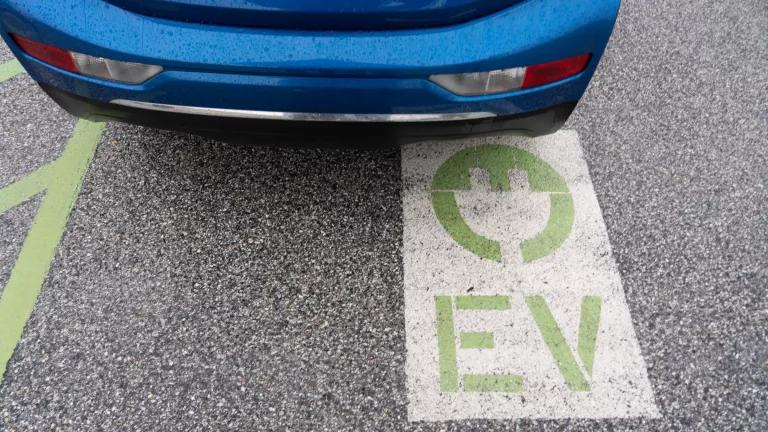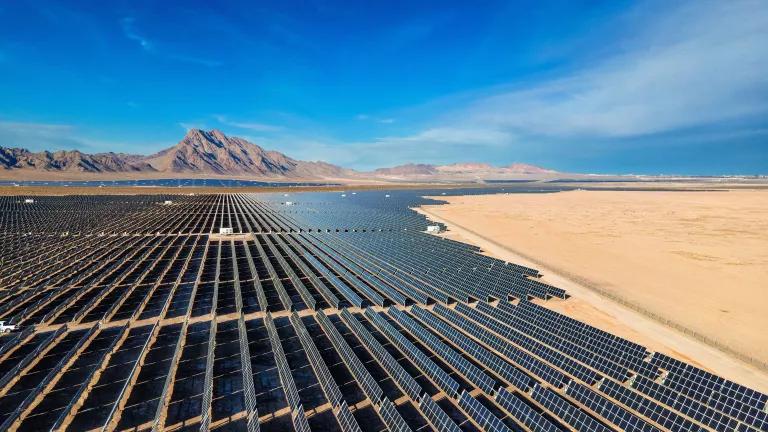It’s Time for Pollution-Free Vehicles and Fuels
President-Elect Biden has laid out a bold commitment to address our climate crisis. His goal is to make the United States a leader in addressing climate change by putting our nation “on an irreversible path to achieve net-zero emissions, economy-wide, by no later than 2050.” For the transportation sector, this would entail a rapid shift to zero emission vehicles and to transit and other cleaner mobility options.

President-Elect Biden has laid out a bold commitment to address our climate crisis. His goal is to make the United States a leader in addressing climate change by putting our nation “on an irreversible path to achieve net-zero emissions, economy-wide, by no later than 2050.” For the transportation sector, this would entail a rapid shift to zero emission vehicles and to transit and other cleaner mobility options. While there are broader changes needed to our overall transportation system (see here for more on this), specific, short- and long-term actions are needed to ensure our nation shifts to zero-emissions cars and trucks.
Net Zero by 2050 Means Rapid Shift to Zero Emission Vehicles
For the transportation sector, President-Elect Biden’s plan also commits the U.S. to 100% zero-emission vehicle sales. To achieve overall net zero emissions by 2050, we will need to transition to 100% zero-emission vehicle sales by the middle of the next decade. This will require a rapid but doable shift from today’s polluting petroleum-based liquid fuels to zero emission, sustainable fuels. Given that cars last 15 years or more on road, the time for partial measures has passed. Fortunately, we don’t have to wait to start this transformation; electric vehicles and clean, renewable electricity exist today.
Strong Vehicle AND Fuels Standards Needed to Drive the Transition
Despite the rapid progress of electric vehicles, they still make up less than 2% of sales. Strong emission standards are a proven way to transform vehicle technology. But an equally strong standard must be applied to the fuels sector to ensure that the petroleum and biofuels industries do their part to align their investments with decarbonization targets.
Strong Vehicle Standards
Vehicles will be a mainstay for travel by most households as well as for freight deliveries. Eliminating their emissions is critical. One of the first priorities of a Biden administration should be reversing the Trump rollback of clean car and fuel economy standards, reinstating state authority to set protective standards and enacting new car and heavy truck standards that put the U.S. on the path to all new sales being zero emission by 2035 for cars and by 2040 for heavy trucks. Moreover, the push for electric vehicles should go hand-in-hand with new power plant standards to move toward carbon-free electricity by 2035, as well.
In setting new federal standards, the Biden administration can ensure that automakers have clear signals to build and sell rapidly increasing numbers of electric vehicles without tailpipe pollution while also making the remaining combustion engine vehicles much cleaner.
On heavy-duty vehicles, EPA should act quickly to tighten standards on smog- and soot-forming pollutants from combustion engines while also promoting the acceleration of zero emission trucks and buses. Again, California has provided a template with their heavy-duty engine regulation that would reduce oxides of nitrogen (NOx) emissions from new vehicles by 90 percent compared to today’s trucks. Furthermore, the state established the Advanced Clean Truck rule to put increasing numbers of zero emission trucks on the roads. Strong federal emission standards would both reduce deadly diesel pollution—including in environmental justice communities—while also spurring the transition to climate-friendly electric freight trucks.
Fourteen states signed an agreement with California to establish their own pollution-free truck requirements, but federal programs can bring their clean air and climate benefits to all the nation’s communities.
Strong Fuels Standards
A commonsense fuels policy will drive investments to deployment of electric vehicles, while creating powerful incentives to invest in future, innovative zero carbon fuels of the future, such as green hydrogen.
A clean fuel standard, such as those in Oregon and California require transportation fuel providers to reduce the carbon pollution intensity—the amount of carbon pollution per unit of fuel energy—of the product mix they choose to sell. In California, the program has resulted in oil companies incentivizing new competition to their monopoly, by allowing suppliers of electricity for vehicles to earn credits.
Done right, a clean fuel standard also provides incentives for biofuel producers to reduce the carbon intensity of their existing fuel volumes without expanding acreage by rewarding innovation in low-carbon liquid fuel production. With smart policy design, we can improve existing fuels while protecting our lands and forests for the carbon they sequester, food they grow and ecosystems they provide.
Investments
The transportation is the largest source of carbon pollution, and the U.S. should invest to accelerate the transition to pollution-free, electric vehicles. Strong vehicle standards should be coupled with vehicle purchase incentives such as rebates and tax credits. Electric vehicle charging infrastructure should be deployed to achieve at least 500,000 charging outlets by 2030 via federal grants and in conjunction with state infrastructure programs. Finally, the U.S. should create strong incentives for domestic zero emission vehicle and parts manufacturing that provide good quality jobs. With these actions, U.S. workers can build the pollution-free vehicles we need here but also become leading clean vehicle suppliers to the world.
It’s time to for bold action on vehicles and fuels. It’s time to go pollution-free.



